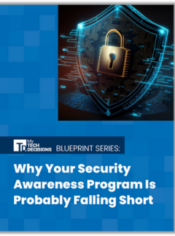Over the years, we’ve all heard people say, “If you don’t know where you’re going, any road will get you there.”
That’s a humorous quote that had its origin in Lewis Carroll’s classic children’s story, “Alice in Wonderland”. Ironically, though, I see it play out on a daily basis in my interactions with organizations that are unsure where they need to go with their data centers, and how to get there.
The problem has as much to do with where we’ve been as where we’re going. Let me explain.
Part of it has to do with that for many years IT organizations have operated under a tight, ‘do more with less’ mandate where their budgets have not been increasing. To a degree, that’s led IT managers to become conditioned to expect that situation isn’t going to change in the future. Meanwhile, however, organizations and the lines of business continue to plan to grow and thrive by leveraging market opportunities made possible, at least in part, through technological innovation.
Unfortunately, that “IT will keep the lights on” mindset tends to limit IT’s proactivity, its leadership in collaborating, planning and ultimately, moving in lock step with its customers in the lines of business to exploit the opportunities they’ve identified out in the marketplace. So, let’s separate for a moment, the day to day operational mindset from the growth-oriented, transformational mindset we need to promote.
One of the largest missteps of a lot of the organizations I work with is we continually hear the same conversations about cutting costs and reducing the spend. We all know that our budgets are not getting any larger and we are being told to do more with less. If our goal is to move the needle forward and innovate, these measures alone will not do that. So, how do we do it you ask? We have to spend wiser, spend smarter and not say what we are going to cut but what we are going to invest in. Reevaluating the portfolio of the offerings and see what still makes sense to offer and this will allow us to bring potential new services to market. This is a transformative action and not just a let’s cut so we can keep the lights on action.
Of course, now we are in the Age of Digital Transformation and with that, Digital Disruption, which is that agnostic force that levels the playing field for market leaders and upstart organizations alike. What that means is every company operating in a competitive environment is confronted by the urgent need to evolve smartly and quickly via improved agility, workforce productivity, talent retention, and technological innovation.
But Digital Transformation, whether in the data center, or any other area of the organization, it’s not a destination, but a long journey. Unfortunately, I see too many organizations that fail to plan appropriately for that journey – with a vision and with a roadmap for the long term.
In client planning meetings in which I participate senior managers want to know how technology can support innovation in their offices, now, often expressed as a standalone, isolated technology decision. Boom, done.
But as many of us have seen, time and again, short term thinking (and decisions) yields short term results. Meanwhile, because of Digital Disruption, our competition is planning for the long-term struggle ahead with its “end goal” in mind.
So, while the ‘now’ question is still a valid part of the vision equation, it needs to be framed in the larger context of, “Let’s also consider what’s coming after that, both technology and capability-wise that we can build on. What starts as a short term discussion now morphs into one that aligns with long term needs and goals.
Time and time again I hear from customers that they want to make the right decision for the company and make sure we have alignment. But inevitably there are delays and there isn’t a decision made due to lack of data or lack of buy in to move forward. What I always tell clients is that the worst decision you can make is not making a decision. I always advise customers to at the very least have a road map discussion internally with your teams and then see how those align with other teams. Roadmaps are designed to become a living entity within organizations and should continue to evolve over time. Remember this is a journey and not a destination. Let us be part of your roadmap journey and let’s take this trip to the future together.
If you enjoyed this article and want to receive more valuable industry content like this, click here to sign up for our digital newsletters!











Leave a Reply